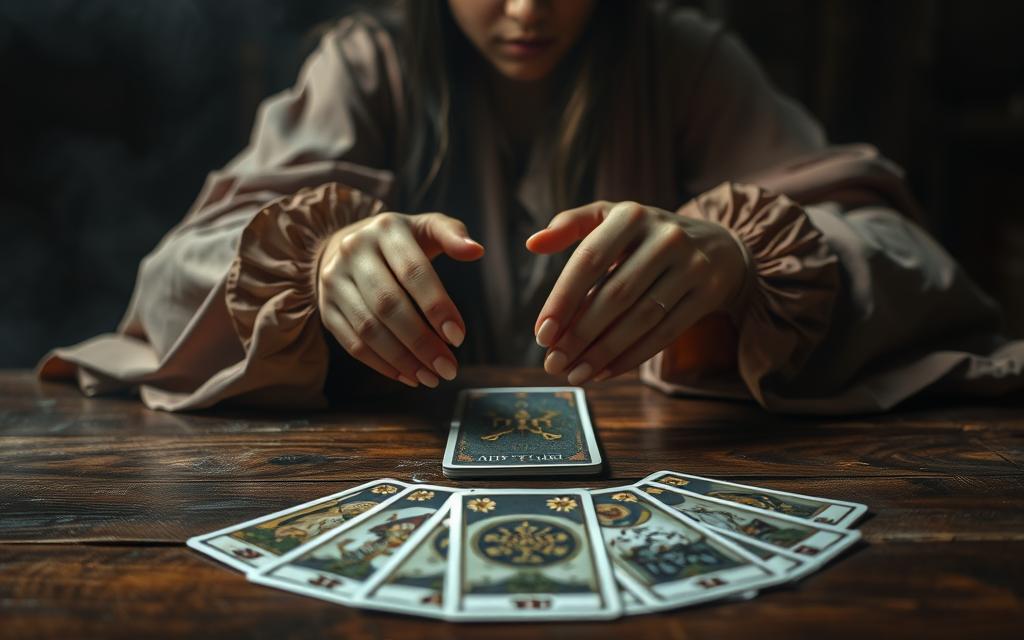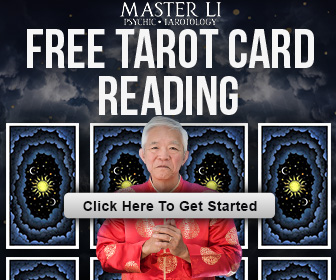Discover the world of tarot card reading for beginners and unlock the secrets of the tarot deck. Tarot cards have been used for centuries as a tool for self-reflection, guidance, and insight into one’s life. Whether you’re seeking clarity on a specific issue or looking for a deeper understanding of yourself, tarot card reading can be a powerful and fascinating practice.
For those new to tarot, learning effective tarot spreads can be a great starting point. This guide will walk you through the basics of tarot card reading, providing a solid foundation for further exploration. By understanding the fundamentals, you’ll be better equipped to navigate the complex and intriguing world of tarot.
Table of Contents
Understanding the Tarot Deck
The tarot deck, a centuries-old tool for divination, is made up of a specific structure that is crucial to understand. To effectively use tarot cards for readings and self-reflection, one must first grasp the composition and significance of the deck.
The Structure of a Tarot Deck
A standard tarot deck consists of 78 cards, divided into two main categories: the Major Arcana and the Minor Arcana. This division is fundamental to understanding the tarot’s symbolism and interpreting the cards.
Major and Minor Arcana Explained
The Major Arcana cards, numbering 22, are considered to hold deeper, more profound meanings and symbolism. They represent major life themes, transitions, and archetypes. On the other hand, the Minor Arcana consists of 56 cards, further divided into four suits, similar to a regular playing card deck. These cards reflect everyday situations and challenges.
The Symbolism and Meaning Behind Tarot Cards
The tarot cards are rich in symbolism, drawing from various cultures, mythologies, and historical references. Understanding the symbolism is key to interpreting the cards. Each card, whether from the Major or Minor Arcana, carries its own unique energy and message, contributing to the narrative of a tarot reading.
By grasping the structure of the tarot deck and the distinction between the Major and Minor Arcana, along with the symbolism embedded within the cards, one can unlock the full potential of tarot readings.
Preparing for Your Tarot Reading
Preparing for a tarot reading involves several steps that can enhance the accuracy and meaningfulness of the experience. It’s not just about shuffling the cards and laying them out; it’s about creating a sacred space for reflection and insight.
Creating the Right Environment
The environment in which you conduct your tarot reading can significantly impact the experience. Choose a quiet, comfortable space where you can focus without distractions. Some people find that certain environments, like a peaceful outdoor setting or a cozy room with candles, help them connect better with the tarot cards.
Cleansing and Connecting with Your Deck
Cleansing your tarot deck is an essential step before a reading. This process removes any negative energy that may have accumulated and reconnects the deck to your personal energy. You can cleanse your deck by placing it under a full moon, using sage or sweetgrass to smudge it, or simply by knocking on the deck to clear its energy.
Setting Your Intention
Setting your intention is about defining what you hope to achieve or understand from the tarot reading. This could be as simple as seeking guidance on a specific issue or gaining a deeper understanding of your current situation. For more information on how to formulate your questions, you can refer to our list of questions to ask the tarot.
Grounding and Centering Yourself
Grounding and centering are practices that help you connect with the present moment and your inner self. Techniques include deep breathing, meditation, or visualization. By grounding yourself, you become more receptive to the insights and messages the tarot cards may offer.
| Preparation Step | Purpose | Methods |
|---|---|---|
| Creating the Right Environment | Enhance focus and connection to the tarot cards | Choose a quiet, comfortable space; use calming elements like candles |
| Cleansing and Connecting with Your Deck | Remove negative energy; reconnect deck to your energy | Smudging with sage, placing under full moon, knocking on the deck |
| Setting Your Intention | Define the purpose of the tarot reading | Formulate specific questions or areas of inquiry |
| Grounding and Centering Yourself | Connect with the present moment and inner self | Deep breathing, meditation, visualization |
How to Deal Tarot Cards: Step-by-Step Guide
The process of dealing tarot cards is not just about shuffling and distributing the cards; it’s a ritual that sets the tone for the reading. To ensure a meaningful and accurate tarot reading, it’s crucial to follow a step-by-step guide that covers the essential techniques and practices.
Shuffling Techniques for Beginners
Shuffling tarot cards is the first step in dealing them. There are several techniques to shuffle the cards, each with its own significance. The most common methods include the Riffle Shuffle, Overhand Shuffle, and Hindu Shuffle. The Riffle Shuffle is a popular choice, as it thoroughly mixes the cards. However, for beginners, the Overhand Shuffle is often recommended due to its simplicity.
As noted by tarot expert Barbara Moore, “Shuffling is not just about randomizing the order of the cards; it’s about connecting with the deck and imbuing it with your energy.”
“The act of shuffling is a meditative process that readies both the reader and the deck for the reading.”
Cutting the Deck: Methods and Significance
After shuffling, the next step is cutting the deck. This is done by dividing the deck into two or more parts. The significance of cutting the deck lies in its ability to further randomize the order of the cards and to involve the querent (the person receiving the reading) in the process, if they are present.
There are various methods to cut the deck, including cutting it once, cutting it multiple times, or having the querent cut it. The choice of method depends on the reader’s preference and the specific tarot tradition being followed.
Drawing Cards: Different Approaches
Once the deck is shuffled and cut, the next step is drawing the cards. The approach to drawing cards can vary depending on the tarot spread being used. For simple readings, a single card might be drawn, while more complex spreads require multiple cards.
Some readers prefer to draw cards from the top of the deck, while others might fan out the cards and allow the querent to select them. The method chosen can influence the reading’s outcome and the connection between the reader, the querent, and the tarot cards.
| Drawing Method | Description | Use Case |
|---|---|---|
| Top Card Draw | Drawing the top card from the deck. | Simple, daily readings. |
| Fanned Card Selection | Fanning out the cards and letting the querent choose. | Interactive readings, involving the querent. |
| Spread-Specific Draw | Drawing cards based on the specific spread’s requirements. | Complex readings, such as the Celtic Cross. |
Common Mistakes to Avoid When Dealing Cards
When dealing tarot cards, there are several common mistakes to avoid. These include not shuffling the cards sufficiently, not cutting the deck properly, and not focusing on the question or area of inquiry during the reading.
To avoid these mistakes, it’s essential to be mindful and present during the process. As tarot reader Rachel Pollack suggests, “The key to a successful tarot reading lies in the reader’s ability to be fully engaged and connected to the cards and the querent.”
By following these steps and avoiding common pitfalls, beginners can develop a strong foundation in dealing tarot cards, leading to more accurate and meaningful readings.
Essential Tarot Spreads and Interpretation
For those new to tarot, understanding and applying various tarot spreads can enhance their reading experience. Tarot spreads provide a structured way to lay out the cards, giving context and deeper meaning to the reading.
The One-Card Draw for Daily Guidance
The one-card draw is a simple yet powerful spread for gaining daily insights. It involves drawing a single card from the deck, which can offer guidance, reflection, or a message for the day ahead. This spread is ideal for beginners as it requires minimal setup and interpretation.
The Three-Card Spread for Past, Present, and Future
The three-card spread is another popular and straightforward layout that represents the past, present, and future. It helps in understanding how past events influence the current situation and what the future might hold. To perform this spread, draw three cards and lay them out in a row, assigning each position its respective time frame.
The Celtic Cross: When and How to Use It
The Celtic Cross is a more complex and comprehensive spread that covers various aspects of a question or situation. It involves laying out ten cards in a specific pattern, each position representing different facets such as the current situation, challenges, and outcome. For more on creating your own tarot spreads, visit True You Tarot.
Reading Reversed Cards
Reversed cards can add another layer of meaning to a tarot reading. They often signify the opposite or a blockage of the card’s usual meaning. However, interpretation depends on the context of the reading and the reader’s intuition.
Trusting Your Intuition in Card Interpretation
While knowledge of tarot symbolism is crucial, trusting your intuition is equally important. Allow yourself to connect with the cards on a personal level, and don’t be afraid to let your instincts guide your interpretation.
| Tarot Spread | Description | Best For |
|---|---|---|
| One-Card Draw | Drawing a single card for daily guidance or insight. | Daily reflections, simple questions. |
| Three-Card Spread | Representing past, present, and future. | Understanding timelines, simple narratives. |
| Celtic Cross | A comprehensive spread covering various aspects of a situation. | Complex questions, in-depth analysis. |
Mastering Tarot Card Reading: A New Journey
Dealing tarot cards is an art that requires practice, patience, and dedication. As a beginner, understanding the tarot deck, preparing for readings, and learning various spreads are essential steps in your journey. This beginner’s guide to tarot has equipped you with the foundational knowledge to start your tarot card reading practice.
As you continue to explore the world of tarot, remember that tarot card reading is not just about predicting the future; it’s also a tool for personal growth and self-discovery. For further learning and to enhance your skills, you can visit resources like True You Tarot, which offers comprehensive guides and insights into tarot reading.
A summary of tarot card reading reveals that it’s a complex yet rewarding practice that can offer deep insights into one’s life and circumstances. By mastering the basics and continuing to practice, you can unlock the full potential of tarot card reading.


